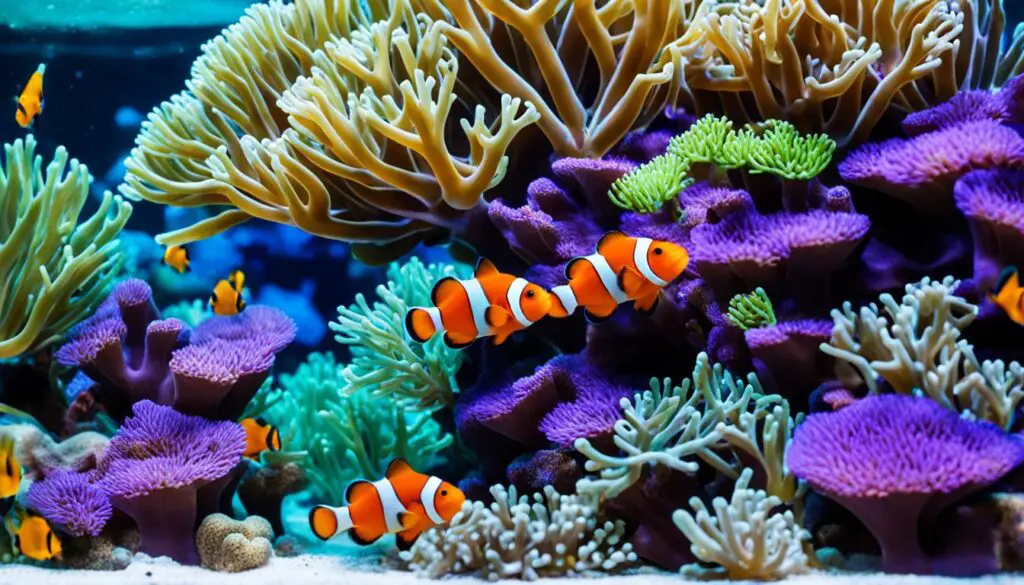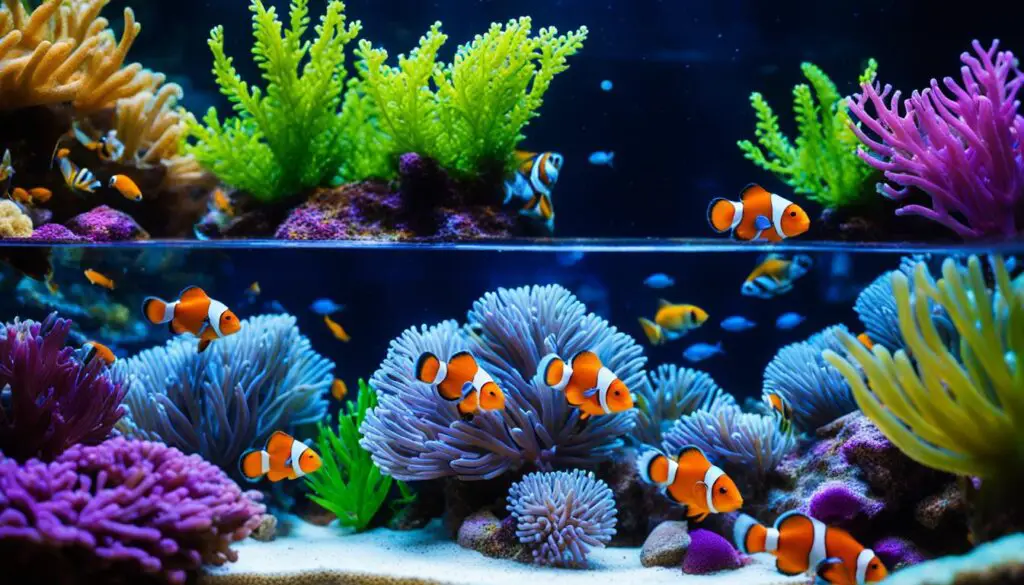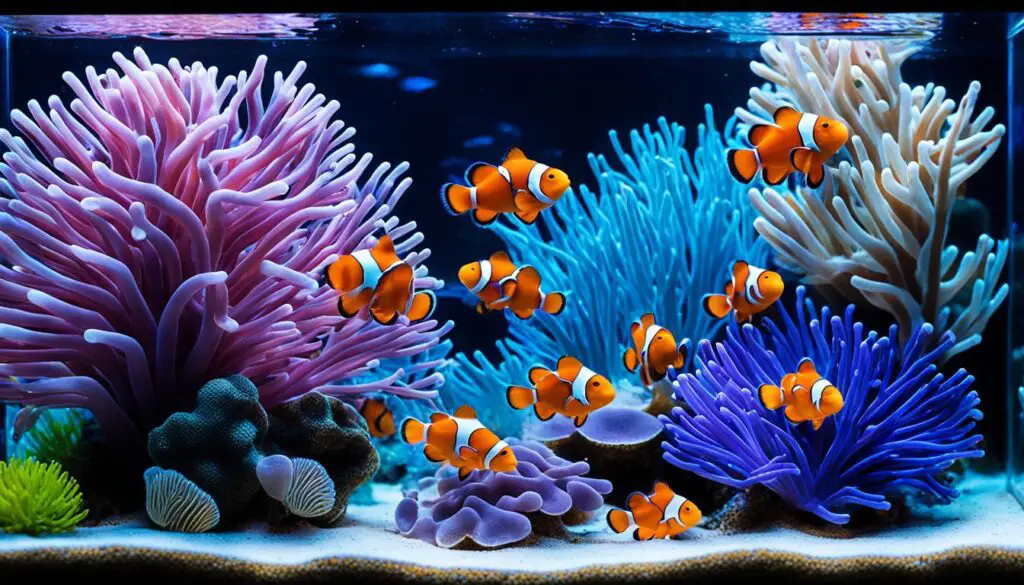Mastering Clownfish Care: A Comprehensive Guide
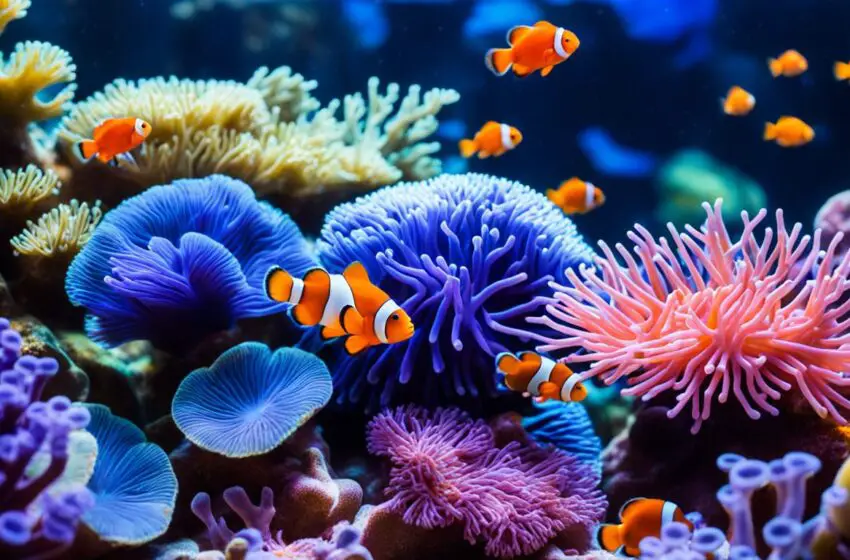
Clownfish are beloved marine fish that bring vibrant colors and lively personalities to aquariums. These enchanting creatures need proper care to thrive in their aquatic environment. Whether you are an experienced aquarist or just starting out, this comprehensive guide will equip you with all the essential knowledge you need. It will ensure your clownfish are happy and healthy.
Key Takeaways:
- Provide a suitable tank size, with a minimum of 30 gallons recommended for A. frenatus.
- Choose appropriate tankmates to reduce aggression. Similar-looking and smaller species may provoke aggression, while larger, assertive species are usually safe choices.
- Maintain stable and clean tank water to create a favorable habitat for clownfish.
- Offer a varied diet that includes both meaty and algae-based foods to meet their nutritional needs.
- Regular observations and tracking of spawning patterns can contribute to successful breeding.
Follow these tips to create an ideal environment for your clownfish. This will help you build a lasting bond with these charming marine buddies.
Let’s dive into the world of clownfish care. We’ll ensure the well-being of your aquatic companions!
Culturing Rotifers for Clownfish Larvae
To raise healthy clownfish larvae, the right food is key. Rotifers are a top choice for their nutrients. They’re easy to breed, ensuring a lot of food for your fish.
First, set up a good home for the rotifers. They like it warm, between 20-25°C. Also, they need well-aerated water. This setup helps them thrive.
Rotifers eat a diet of phytoplankton and algae. It’s vital to watch what they eat. This keeps them healthy and your culture strong.
It’s important to watch your rotifers every day. Inspect and harvest them often. This keeps their living space just right, not too crowded.
Rotifers aren’t just for clownfish. You can also feed them to corals if you have extra. So, they’re great for any marine pet owner.
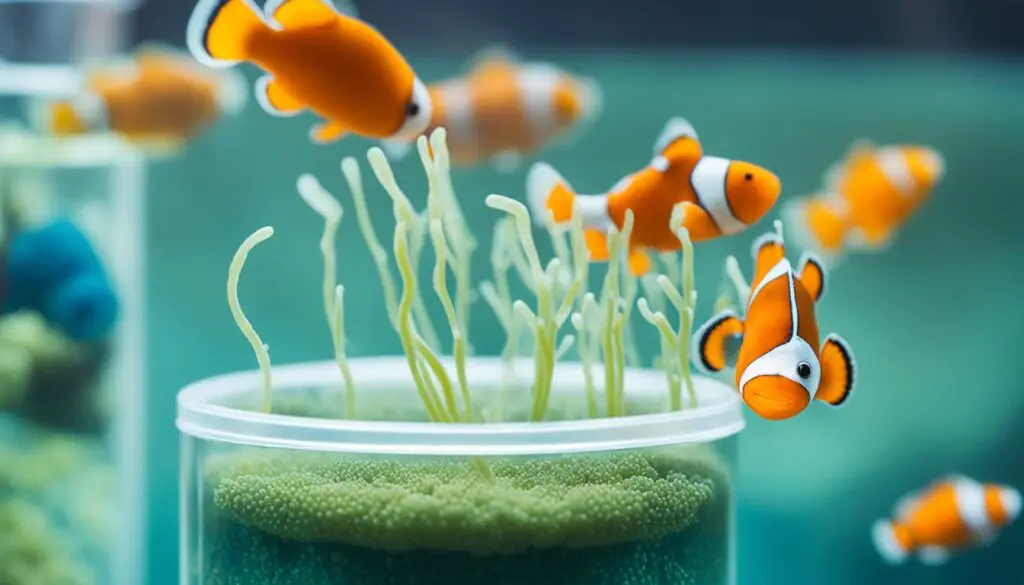
The Benefits of Culturing Rotifers
Rotifers help clownfish fry with a steady food source. This ensures they get the nutrition they need. It’s vital for their early survival and growth.
They’re perfect for small clownfish because of their size. They’re easy to eat and promote good feeding habits and growth.
Plus, rotifers are a powerhouse of nutrients. They contain proteins, fatty acids, and vitamins. This helps the clownfish fry become strong and colorful juveniles.
| Benefits of Culturing Rotifers for Clownfish Larvae: |
|---|
| Consistent and abundant live food supply |
| Ideal size for easy consumption by clownfish fry |
| Highly nutritious, promoting healthy development |
Caring for Clownfish in the Aquarium
When caring for clownfish, getting the environment right matters a lot. Start by picking the correct tank size. A tank with at least 30 gallons suits species like Amphiprion frenatus well. They need space to swim and claim areas.
It’s important to think about aggression too. Clownfish can be lively, so you need to choose their tank buddies wisely. Pick species bigger and more confident than clownfish. This choice helps keep peace among all the fish in the tank.
Keeping the tank water clean and stable is key. Test the water often and use good filters. A balanced diet of meaty and algae foods keeps clownfish healthy. Offer them pellets, frozen or live foods, and some veggies now and then.
Many people think clownfish must have an anemone to live happily. But in a tank, they can do well without one. If you add an anemone, be sure it’s right for the fish. Your tank also needs the right light and water for both.
FAQ
How large of a tank do clownfish need?
A tank for clownfish should be at least 30 gallons, especially for the A. frenatus species.
Are clownfish aggressive towards other fish?
Clownfish can get a bit pushy. Choosing bigger, non-lookalike tank mates is wise. This helps avoid conflicts.
Do clownfish need a host anemone in captivity?
No, clownfish don’t need an anemone to thrive. They’re quite happy without one.
What should I feed my clownfish?
Give clownfish a mix of meaty and veggie foods. This keeps them healthy and happy.
How can I culture rotifers for clownfish larvae?
To culture rotifers, feed them well, keep the right temperature, and ensure they have enough oxygen. Regularly harvest them. This creates a nutritious food source for clownfish babies.
Can rotifers be fed to other marine organisms?
Yes, extra rotifers are great food for things like corals.
How can I ensure a stable and clean tank water environment for my clownfish?
To keep the water clean, check the parameters often, change water regularly, and ensure your filter works right.
How can I track the spawning patterns of my clownfish?
Keep an eye out for mating signs by watching their behavior closely. This helps you understand their spawn timing.

